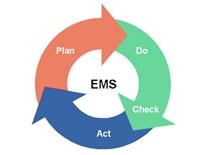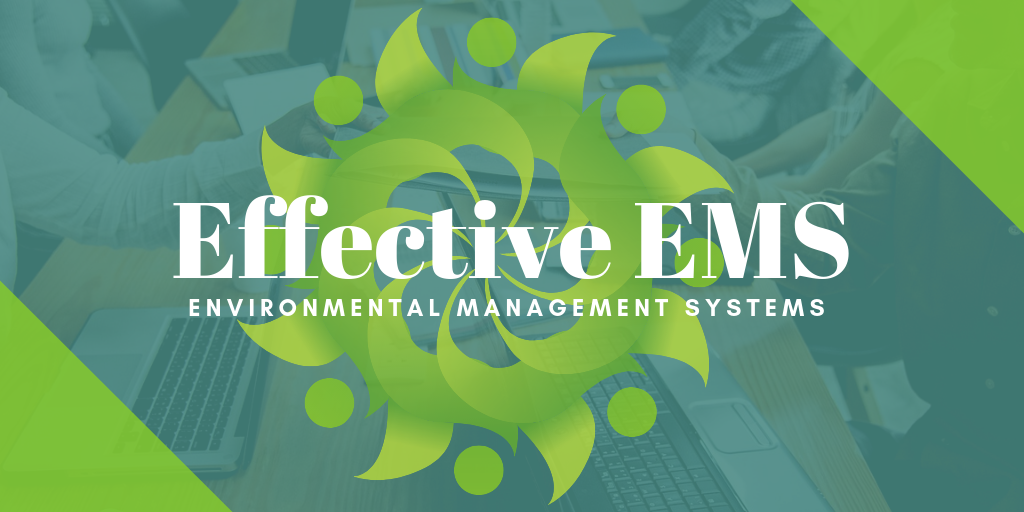An Environmental Management System (EMS) is a tool that helps manage the impact on the environment associated with a business or organisation. Companies may implement an EMS for various reasons ranging from improving environmental performance, community expectations to meeting requirements for certification associated with a legal obligation. It is worth noting that if implemented well and for the right reasons, an EMS can be a powerful tool to help a business to improve their environmental performance.
If developed and implemented effectively, an EMS can benefit your business by:
- contributing to improved environmental outcomes
- help ensure regulatory compliance,
- minimise risk,
- increase organisational efficiency,
- generate a positive company image, and
- improve environmental performance.

Source: ddot.dc.gov
So how do you develop and implement an effective EMS, you ask? The following four factors are critical for your EMS to be effective:
- Planning;
- Management & Employee Commitment;
- Multifunctional involvement; and
- Provision or availability of resources.
Planning
EMS development is a significant undertaking. Therefore planning is key to develop and implement an effective EMS. The time and effort required to develop and implement an EMS should not be underestimated. When planning for an EMS, you should:![]()
- Define your business’ goals for EMS,
- Secure top management commitment,
- Select an EMS Champion,
- Build and implementation team,
- Prepare budget and schedule,
- Secure resources, and
- Monitor and communicate progress with the implementation team and management (EPA, 2018)
Your plan needs to include implementation requirements, education and training, internal audits and actions, and time to run the system (records are collected to demonstrate implementation). If you plan to obtain certification for your system, then you also need to allow time to demonstrate continuous improvement.
During the planning phase, consideration should be given to the most appropriate design strategy for your business. The most common strategies for building an EMS include:
(1) Alignment with an existing standard – EMSs that are aligned with a current standard are easy external parties to see and understand, and are easy to audit. However, this approach can create duplicate documentation and will require the company to thinking according to the standard rather than how the company works (Statzer, J.H and Baldwin M.J, 2011).
 (2) Alignment with a company’s structure – EMSs which are aligned with a company’s structure offers the advantage of a simplified top-down implementation that can easily be mapped and associated with existing functions. However, while such a system may be streamlined and responsive at one facility, it may end up fragmented across the organization if there are multiple facilities that do different work or do the same work differently (Statzer, J.H and Baldwin M.J, 2011), or
(2) Alignment with a company’s structure – EMSs which are aligned with a company’s structure offers the advantage of a simplified top-down implementation that can easily be mapped and associated with existing functions. However, while such a system may be streamlined and responsive at one facility, it may end up fragmented across the organization if there are multiple facilities that do different work or do the same work differently (Statzer, J.H and Baldwin M.J, 2011), or
(3) Alignment with a company’s existing business processes – EMSs that are aligned to the organisation’s existing business processes face greater success over the long haul, but more significant challenges during implementation. For example, for large business, the system would be typically implemented based on management and the reporting requirements. While at the facility level, the system is implemented according to existing work processes, so that the system flows in parallel with the work. This approach provides the closest alignment to “how the work is done” (an essential element in a successful system). It should be noted that this approach will require that the organization shift its focus from how the work is organized to how it is actually done. The process of implementing such a system can also uncover a number of work process problems that need to be addressed (Statzer, J.H and Baldwin M.J, 2011).
As a business, you need to determine which strategy is best suited to their business, which may be one of the strategies listed above or a combination of all three.
Management & Employee Commitment

Source: http://www.sipparoil.com
An appropriate level of management commitment needs to be secured in the early planning phases of the EMS. Management support is vital to ensure an organisation wide understanding and commitment to environmental issues and management (Darnall, et al., 2008). Such commitment is also critical to maintain and improve an organisation’s environmental strategy over time. In particular, management attitudes and views, management interpretations, and environmental values and leaders all influence management decisions and partially explain why a facility may adopt a specific environmental activity.
If you are a business owner or senior management in an organisation that is adopting an EMS, to be effective, you must ensure that you’re committed to and involved with the EMS development, implementation and management of the system. You also need to be committed to the reality that it will take considerable time and effort before the EMS is fully implemented and be prepared to display persistence and visible commitment over a number of years. (Statzer, J.H and Baldwin M.J, 2011).
 Further, all levels of the business must be committed to the EMS and involved in its implementation. Where senior management is seen to show no interest in an EMS, the chances are that the initiative will fail as employees are likely to have an even lower level of commitment. The EMS needs to be presented and seen as a company-management driven initiative, not one being driven by the EMS Champion.
Further, all levels of the business must be committed to the EMS and involved in its implementation. Where senior management is seen to show no interest in an EMS, the chances are that the initiative will fail as employees are likely to have an even lower level of commitment. The EMS needs to be presented and seen as a company-management driven initiative, not one being driven by the EMS Champion.
Further, management commitments need to be partnered with support from non-management employees for the EMS to be effective. Like managers, employees must be committed to the organisation’s environmental goals to role out an EMSs to ensure it is effective and stands the test of time (Darnall, et al., 2008). Where there is management support, often this means there is support from management the organisation values and environmental strategies, and it is likely that the EMS will be given the adequate resources to be implemented effectively to reduce environmental impacts.
In addition to commitment, both senior management and employees must be prepared to embrace changing the way work may be done at all levels of the business in order for an EMS to be successful.
Multifunctional Involvement

Source: educationalresearchtechniques.com
Responsibility for design and implementation of the EMS should be assigned across different parts of the business including environmental personnel, operations personnel and other relevant stakeholders. In reality, operations personnel have such a critical role to play in the effective design and implementation of EMS as they know what is practical or impractical and can offer practical suggestions on how an EMS can be optimized
Environmental personnel provide a critical support role in both EMS design and implementation, but ultimately the responsibility for implementation must rest with management and operational personnel where their actions are most likely to result in environmental incident and impacts.
Resources
During planning, development and implementation, you should identify whether your business has the skills and the ongoing human, financial and physical resources required to develop an EMS. Take the time to assign and agree on responsibilities during the early stages to ensure the continuing availability of resources and accountability.
If in-house resources are unavailable, consider engaging an Environmental Consultant who specialises in environmental risk management and EMS, with adequate qualifications and experience.
Are you are thinking about developing an EMS or even checking if your current EMS is effective? Consider completing an EMS Audit for effectiveness or if you require assistance contact Integrate Sustainability on 08 9468 0338 or enquiries@integratesustainability.com.au
Download PDF: ISPL Insight – Effective Environmental Management Systems

References
Darnall, N., Henriques, I., & Sadorsky, P. (2008). Do environmental management systems improve business performance in an international setting? Journal of International Management(14), 364-376.
EPA. (2018, 11 02). USEPA – Environmental Management Systems. Retrieved from United States Environmental Protection Agency: https://www.epa.gov/ems/guide-developing-environmental-management-system-plan
Statzer, J.H and Baldwin M.J. (2011). EMS: Key issues on Design, Value and Implementation. Texas.

